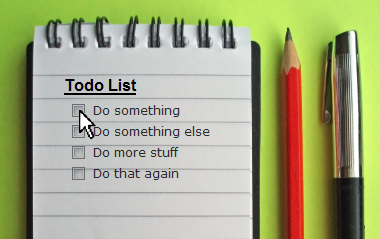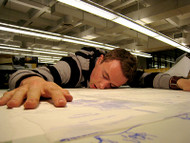Excited About Building A Boat, But Struggling To Get Started?
Posted by John Brantuk on Aug 8th 2013
Editor's Note: This is an article submitted by one of our boatbuilders, Carl Smoot, whose Glen-L Vera Cruise photo gallery can be found here.
I read the latest newsletter and was prompted to send in an article I have written about getting started. I’m not sure if you want to use this, but I know from participating in the Boatbuilder Forum, that there are numerous individuals who get excited about building a boat, but then struggle to get past that point. Perhaps this article can help with that.
Excited About Building A Boat, But Struggling To Get Started? by Carl Smoot, Cedar Park, Texas:
Recently, I've become aware that I had reached a crossing point in my boat build project. I had completed work on the structural components and knew that the next step was to begin assembly of the boat itself. I had gotten very comfortable with the process of working on the frame assemblies. It was quite easy to go out to the garage and do some part of the process such as applying a coat of epoxy.
This crossing point was similar in a way to when I had made the decision to build the boat early last summer. I was all excited about the idea and had purchased the plans. After I received them, I started realizing the magnitude of what I was about to embark on. My mind went into overdrive and started worrying about this detail and that detail. It became quite easy to come home from work, sit down at the computer, and spend an evening “researching” rather than “building”.
 I’m talking about the process of getting started, also commonly known as getting over procrastination. Like most humans, I have ideas about what I would like to do. It’s quite easy to go the next step in this process, namely finding out more about it. What is not so easy is moving on to the constructive phase.
I’m talking about the process of getting started, also commonly known as getting over procrastination. Like most humans, I have ideas about what I would like to do. It’s quite easy to go the next step in this process, namely finding out more about it. What is not so easy is moving on to the constructive phase.
There are some rare individuals, who can take an idea and immediately begin putting it into execution. Perhaps they suffer from self-doubt and procrastination as well, but they manage to shove these issues aside and get going with whatever endeavor they undertake.
However, I believe that many people are like me in that they get an idea, look into it, and then have difficulty moving beyond that point. Often this process is subconscious. We’ll find something else that “has to get done”, or we have doubts about our ability to do something and so we figure we have to “plan for it”, or perhaps we feel that we “don’t have enough tools”. Maybe “life gets in the way”, as it often legitimately does.
It’s been said that getting started is often one of the hardest parts of doing any project. What I would like to talk about are some strategies that have worked for me in the past to get beyond the start.
The first thing that anybody beginning a large project like a boat build should do, is to understand that it is going to take time to do it. That means that the person needs to have some degree of patience. If one can be patient with the process, then it is possible to use another strategy, namely breaking the project down into smaller pieces.
 I think that people probably instinctively do this, but then get bogged down in this “thinking stage”. So it is necessary to develop some form of plan to continue moving forward. What works for me, is to look at the first thing I want to accomplish, and make a list of 20- to 60-minute tasks to start making it happen.
I think that people probably instinctively do this, but then get bogged down in this “thinking stage”. So it is necessary to develop some form of plan to continue moving forward. What works for me, is to look at the first thing I want to accomplish, and make a list of 20- to 60-minute tasks to start making it happen.
For example, one of the requirements for my boat build is to build a structure to assemble the boat on. In my case, this structure needs to be movable because of size limitations in my work area. It also has to be fairly strong because it will carry considerable weight and be subject to stresses from various operations. This structure is fairly complicated and I spent a bunch of time “thinking about it”, which was a necessary task, but then progress stopped.
To get it going again, I figured out the minimum amount of material I needed to begin building, went to my lumber supplier, and bought the wood and hardware. Not enough to complete the structure, just enough to begin. These were two separate 60 minute tasks.
Additional short tasks involve measuring out cut lines and rearranging my garage. I try to do things I can get done quickly, rather than planning on spending hours and hours trying to get through some phase. This allows me to go out there every night and “make some progress”. This has the benefit of allowing me to build momentum, which is crucial to getting started. I can accomplish my task or set of tasks, and go to bed knowing that I’ve moved forward. I also know what I am going to do the next evening when I get home.
I’ve used this process over and over and after a short time I find myself engrossed in whatever process I am involved with. Before I realize it, another phase of the project has been completed; then I have to “get started again.”
 So what do you do if you don’t have enough tools” or have “serious doubts about your abilities to do this”? Make a list of short tasks. It doesn’t matter what they are, so long as they are something that moves you forward, even if it’s only a very little bit.
So what do you do if you don’t have enough tools” or have “serious doubts about your abilities to do this”? Make a list of short tasks. It doesn’t matter what they are, so long as they are something that moves you forward, even if it’s only a very little bit.
Don’t have enough tools? Then take a serious look at what you have to do and ask yourself, if you really need any tools to actually start. Maybe all you really need is a pencil and some carbon paper. Doubt your ability to do the task? Then, find some part of the task that you can do and DO it. The important part here isn’t the actual task, but rather the momentum you begin to build by doing it. Make sure you have a list of tasks you can do initially so that you can keep going.
Finally, I’d like to say that none of this is promoting rushing into something you can’t do, or moving too quickly, or failing to plan. These are all important, and procrastination has its place. It keeps a sanity check on our activities. Just don’t let it get in the way if you’ve made the decision to do something. And remember, start with baby steps, but keep stepping and build momentum. Soon you’ll be fast walking, and before you know it, you’ll be at your destination or at least the next waypoint in your trip.
